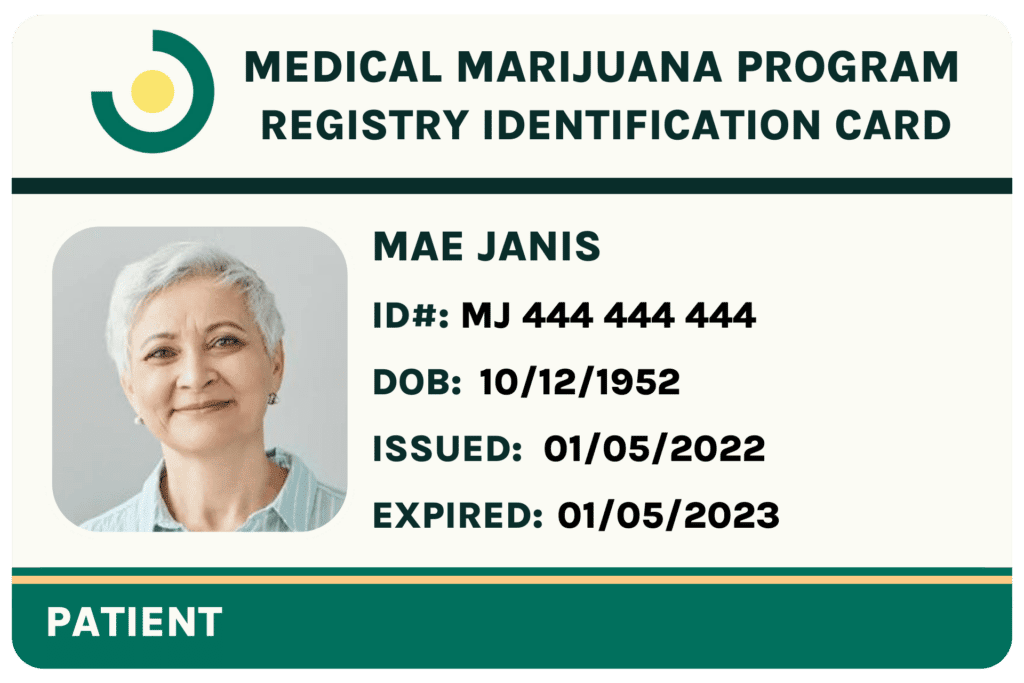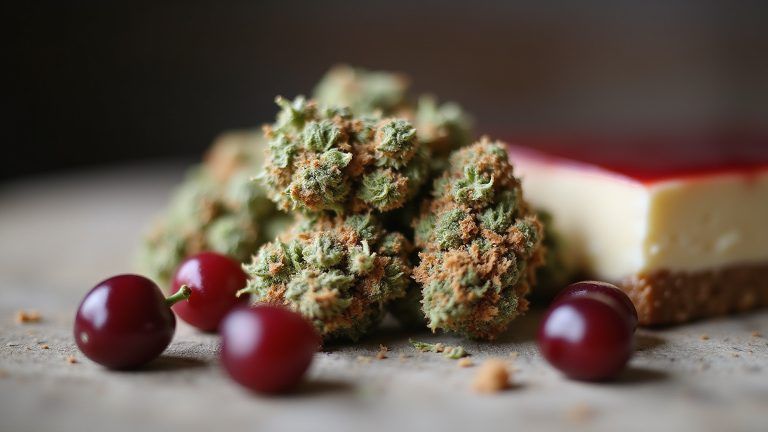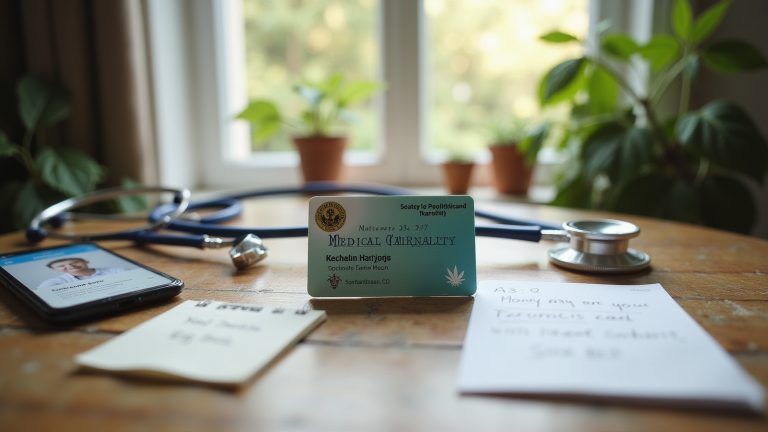How to Make Cannabutter
by Nida Hammad · December 2, 2022
Looking to cook with cannabis? Here’s a comprehensive guide on how to make cannabutter, including step-by-step instructions and tips.

- Cannabutter is a versatile and popular edible form of cannabis that allows users to enjoy the effects of THC without smoking, and it can be used in a variety of sweet and savory recipes.
- Decarboxylation is a crucial step before infusing cannabis with butter as it activates THC by converting THCA into its psychoactive form through gentle heating.
- Different infusion methods such as stovetop simmering, crock-pot, sous vide, or double boiler can be used to make cannabutter as long as the temperature stays consistent and moderate to avoid burning.
- Dosing is challenging and requires caution because potency depends on several factors including strain strength, temperature, and infusion time. Starting with small doses and adjusting gradually is recommended.
- Proper storage is essential since cannabutter can last up to six months in the refrigerator or up to a year in the freezer when kept in sealed opaque containers to preserve potency and freshness.
One of the most standard ways to make homemade medical cannabis edibles is by infusing unsalted butter. Making cannabutter is a relatively straightforward process, and the end product is versatile and can be used in many edible recipes. Below, we guide you through the steps, from decarboxylation to a cannabis-infused product.
What is Cannabis Butter?
Cannabutter is unsalted butter infused with cannabis and is an essential ingredient in many delicious weed edibles. It’s just one of the numerous ways to consume marijuana, but definitely among the most popular. There are dozens of dishes that use cannabis as an ingredient, including desserts, pasta, soups, and more.
Weed brownies and many other homemade edibles typically use a cannabutter replacement for unsalted butter. This is a tasty way to receive the high that comes with adding THC to your food.
Especially for those that don’t enjoy smoking marijuana, cannabis butter is just as effective for reaping the benefits of cannabis without the harmful smoke.
There’s no need to be highly knowledgeable about cannabis or cooking to whip up a cannabutter recipe. When utilizing cannabutter, there are endless possibilities for substitution. Really, with any recipe that calls for butter, olive oil, coconut oil, cannabis oil, etc., cannabis-infused butter can be used as a replacement.
What Can You Make With Cannabutter?
Once you’ve mastered the basics, the sky’s the limit for what you can whip up with cannabutter. Classic weed brownies are a favorite, but you’re not limited to just sweets. Try stirring cannabutter into pasta sauces, spreading it over freshly baked bread, or using it in savory dishes like mashed potatoes and sautéed veggies.
For those who want to mask the herbal taste, peanut butter cookies are a popular choice, the rich, nutty flavor blends perfectly with the cannabutter. Or, if you’re feeling adventurous, experiment with your favorite recipes: anywhere you’d use regular butter, you can swap in cannabutter for a little extra “kick.”
Don’t be afraid to get creative. Melt a pat in a skillet for cooking eggs or toss a dollop into your morning oatmeal. The options are as broad as your imagination and taste buds allow.
In the next section, we’ll take a look at how cannabis-infused edibles have been enjoyed for centuries, starting with traditional drinks like bhang.
Endless Culinary Possibilities
Once you have a batch of cannabutter ready, the culinary world is your oyster. Classic weed brownies are just the beginning—think gooey chocolate chip cookies, savory pasta sauces, or even a dollop of cannabutter melted over roasted vegetables. For those who want to mask the herbal flavor, peanut butter cookies are a great option since the peanut butter can mellow out the planty taste.
Cannabutter can also be used in more creative ways. Toss a bit into a skillet before cooking eggs, sautéing greens, or pan-frying your favorite protein. Pretty much any dish that calls for butter can get a subtle (or not-so-subtle) cannabis kick.
So, get creative! Whether you’re baking, cooking, or just spreading a little on toast, cannabutter opens up a world of homemade edibles tailored to your taste and potency preferences.
Why Decarboxylation Matters
Before you start infusing butter, it’s important to decarboxylate your cannabis. This process activates the THC by converting THCA (the non-psychoactive compound in raw cannabis) into psychoactive THC. Decarboxylation is done by heating cannabis at a low temperature in an oven before mixing it with butter. Skipping this step means your edibles won’t deliver the desired effects.
When cannabis is smoked, the flame does the decarboxylation instantly. But for edibles, you need to gently bake your ground cannabis first—typically at around 240°F (115°C) for 30–40 minutes, before infusing it into butter. This unlocks the plant’s full potential so your edibles are as effective as intended.
Cooking with Cannabutter
Once you’ve infused your butter, it’s ready to use in any recipe that calls for regular butter. People commonly use cannabutter for classics like brownies, cookies, and cakes, but it’s just as delicious melted on toast or stirred into mashed potatoes.
You don’t have to use only cannabutter in your recipes—feel free to mix it with regular butter for milder effects or to better control dosage. Whether you use all cannabutter, half and half, or just a spoonful, you can tailor your edibles to your preferences and needs.
With a little preparation and creativity, cannabutter opens the door to countless homemade edibles, letting you enjoy the benefits of cannabis in whatever dish you crave.
Human civilizations have made homemade cannabis edibles for centuries, beginning with the invention of bhang. Bhang is prepared from the buds of a cannabis plant and then typically consumed as a beverage in parts of South Asia. It’s a combination of milk, spices, and ghee crafted to infuse food and drinks with cannabis for medicinal benefits.
Medicinal Benefits of Cannabis
Below, we have listed the top fifteen medicinal benefits of CBD and THC:
- blood pressure regulation
- stress relief/muscle relaxant
- depression and anxiety
- reducing inflammation
- fighting cancer and its symptoms
- alcohol and drug addiction
- anti-seizure
- gastrointestinal disorders
- appetite and weight management
- PTSD management
- autism treatment
- chronic pain relief
- arthritis/ joint pain
- multiple sclerosis
- endometriosis relief
Is it Cheaper to Buy or Make cannabutter?
There are high-quality cannabis infusions available for purchase online or in stores, but they will be pretty pricey. We found the average price for cannabutter online is forty dollars for four ounces of product.
To make the cannabutter, you’re looking at a few hours of relatively easy labor and about fifty dollars in cost for double the amount of product. So, depending on how much time and space you have to cook, making your own is a much more affordable option.
Can You Make Cannabis Butter Quickly?
Extracting THC from finely crushed cannabis flowers takes around two to three hours. Then, you’ll want to simmer it for another two to three hours and let it sit in the refrigerator overnight. It is reasonable to assume you can begin the process one day and have a fully infused, potent butter or oil.
How Long Does it Take to Kick in?
It usually takes 30–90 minutes to feel the full effects of edible foods. Reaction times can typically last two to four hours; however, this depends on dosage, tolerance level, body weight, and metabolism.
Mistakes to Avoid When Making Weed Butter
- Decarb before adding ground cannabis. If you don’t, the butter will not taste great and will be less potent due to cannabinoids not being fully activated. Just be sure to use the right amount of heat to decarb cannabis, not too much heat, not too little.
- Get the grind right. If you grind the weed too fine, you’ll end up with a green, odd-tasting butter or oil. Using a hand grinder or coarse coffee grinder for optimum results is best.
- Be patient when straining. Cheesecloth, gravity, and time are the ingredients to strain your infused butter properly. Do not squeeze the cloth at the risk of adding in excess plant matter.
- Mix well. Remember to occasionally stir when making cannabutter and mix well towards the end for an even level of potency and flavor.
Homemade Cannabutter Recipe
Here is one of our favorite cannabutter for those interested in attempting to make it at home:
Ingredients
- 1 cup of butter (2 sticks-unsalted)
- 1 cup water
- 1 cup decarbed, ground cannabis (7-10 grams)
Directions
- Decarb the cannabis.
- Grind or break up the buds.
- Melt the butter.
- Add the weed.
- Simmer.
- Strain the mixture.
- Refrigerate/ Store.
The Step-By-Step Process
Here, we provide a detailed guide with all the steps to make cannabutter. This article will provide essential details and a simple, step-by-step recipe that’s easy to print or save for later.
Use High-Quality Bud
The quality of your cannabis flower is essential. It can affect the potency and flavor of your finished weed oil. It’s crucial to find a high-quality strain with the desired effects you’re looking to feel.
Preheat Your Flower
In raw form, marijuana has no psychoactive potential. Natural cannabis and its derivatives contain cannabinoids THCA and CBDA. When you eliminate A, you’ll find THC and CBD. Without activation, this drug does not cause any psychoactive effects.
To convert to THC and CBD, heat and time are necessary ingredients. The greater the temperature, the quicker the reaction is. If used as cannabutter, excessive heating produces a taste similar to burnt popcorn. There are many options for decarboxylating weed.
Decide on a Decarb Process
As previously discussed, the cannabis leaf is organically non-psychedelic. This plant material contains high amounts of cannabinoids such as THCAs and CBDA, which form a broad range of cannabinoid acids. To achieve the ‘high’ effect of marijuana, you will have to convert the cannabis through decarboxylation.
Cannabutter is primarily made by decarboxylating cannabis plants and can be made using various techniques for the infusion process. The cannabinoids that live within cannabis buds are activated when decarboxylated or removed.
Baking
If you’re planning to make infused butter with cannabis flower, baking your weed first is an optimal way to decarb. You’ll want to break up your buds into small pieces and evenly distribute them on a sheet pan with parchment paper. Then, you’ll cover and bake on low heat for thirty minutes. After it cools, you’ll have fully decarbed cannabis for your edibles.
Boiling
You can also boil cannabis in a tea bag or place it in a heat-proof bowl of simmering water to draw out the cannabinoids. Once the cannabis has reached the ideal temperature, you can then add melted butter to provide something the cannabinoids can stick to.
Add the Butter
Regular butter is a type of fat used in a cooking experiment for cannabis and has an ideal consistency and flavor, and should be included in many baking recipes. Olive oil, vegetable oil, and coconut oil, all fatty acids that can remain stable in the liquid between 160-200 degrees can be used to infuse the butter. The milk solids will dissolve during the process.
Cannabis-infused butter, or “cannabutter,” is one of the simplest and most common ways to make edibles. Butter is an ideal medium for cannabis infusion because it’s delicious, versatile, and THC needs to bind to fat molecules, which are abundant in butter and in oils like coconut, olive, or vegetable oil. These fats not only carry the cannabinoids effectively but also blend seamlessly into a wide range of recipes, from brownies to savory dishes. Whether you’re using classic butter or opting for another fat, just be sure you maintain a gentle temperature to avoid scorching, and allow enough time for the cannabinoids to fully infuse into your chosen base.
Steep
It is possible to soak decarbed grass with fat by following several techniques. The best option depends upon your taste and what equipment you have to work with. Probably the most basic version occurs over the stove using one or two large pots.
The first way you could make a batch of cannabutter is to mix the butter in equal parts of water. The process aims to keep the temperature within 160 to 220 degrees, so be proactive in piloting your newly brewed beer from the start to the end.
Once you have decarbed the weed, you can also place the butter mixture in the microwave to infuse it. Mix two cups of water with the butter, and it will heat fast and evenly while eliminating excess water and milk solids. The butter should cook at around 300 degrees Fahrenheit. Cooking thermometers are useful for measuring temperature accurately.
Strain
After simmering and slowly increasing the butter’s temperature, you need to strain it. Put a few layers of cheesecloth into jars and utilize an elastic band to keep it safe during tension. You can do the same process with a coffee filter if you don’t have access to a cheesecloth.
Pour a small amount of butter into a cheesecloth and allow ample time for drainage and evaporation of milk solids to prevent overflow. When strained, it can easily be removed or recycled into compost, and the butter can go into a mason jar. Then, placing it in a mason jar for a few hours in the refrigerator will complete the process.
It can be used immediately to make baked goods and many recipes involving cannabis. Infused butter and fats last up to six months in the refrigerator and up to a year in the freezer when appropriately stored in mason jars or other sealed glass containers.
Alternative Cooking Method to Make Cannabutter
All three methods below aim at maintaining equilibrium in butter temperature to prevent heat or burn.
How to Make Cannabutter in a Crock-Pot
If you’re looking for a different method to make cannabutter, you can decarb weed using a slow cooker and olive or coconut oil instead of butter. You’ll place dried cannabis and your chosen oil into the slow cooker for this recipe.
How much cannabis will depend on the amount of butter you want at once. Then, cover and cook on high for an hour. Turn the slow cooker down and cook on low for another three hours, and strain the cooled butter as usual.
Sous Vide Canna Butter
The method for sous vide cannabutter is an excellent choice for those wanting to release as discreet an odor as possible.
With the sous vide method, you’ll still begin by coarsely grinding the plant matter with a hand or coffee grinder and placing them in a heat-proof, vacuum-sealed bag. After that, place a large pot on the stovetop and fill it with water.
Once the water has reached 230 degrees Fahrenheit, place your sealed bag of buds in hot water and cook for an hour and a half before infusing the butter.
Using the Double Boiler for Cannabis Butter
First, for the double boiler method, you’ll fill the lower half with water and melt the butter in the top half above your hot water pan. Then, add a cup of water to regulate the temperature at low heat. Once thoroughly mixed, add your cannabis, simmer and stir occasionally to ensure your butter doesn’t overheat.
How to Dose Your Weed Butter
A proper dosage of cannabis butter can be tricky as many variables are involved. The best idea for beginner use is always to consume less than you believe you’ll need. Start with a low dose for your first batch and move up in increments, depending on the desired effects. Don’t consume more butter immediately without knowing its relative power and tolerance. No matter what, wait about 1 to 2 days to increase the dosage after your first experience.
Why Is Dosing Cannabutter So Challenging?
There’s no exact science to calculating edible dosage at home because several factors influence the final potency:
- Potency of the cannabis used: The percentage of THCA (usually listed on dispensary packaging) gives you a starting point, but it’s not the whole story.
- Infusion time: How long you heat the mixture affects extraction, but more time doesn’t always mean more potency.
- Temperature: Infusing at a higher or lower temperature can change how much THC and other cannabinoids end up in your butter, but small shifts don’t create predictable results.
For example, cannabis with 23% THC isn’t necessarily 5% stronger than a batch with 17% THC, and heating your butter for two hours instead of one doesn’t mean you’ll get twice the strength. These variables can interact in unpredictable ways, so it’s tough to know exactly how potent your homemade cannabutter will be.
How to Test Your Batch
The safest approach is to try a small amount first. Spread ¼ or ½ teaspoon on a snack, wait at least 90 minutes to gauge the effects, and then decide whether to adjust your dose next time. Patience is key, give your body time to respond before increasing the dosage.
The quantity of cannabis differs depending upon the strain, recipe, and technique you use. What you want to know is THCA percent. The THCA is measurable on most legal marijuana jars, so it should be easily found.
Adjusting Strength: Cannabis to Butter Ratio
If you’re looking to customize the potency of your cannabutter, the cannabis-to-butter ratio is key. A common starting point is a 1:1 ratio—one cup of ground cannabis to one cup of butter. However, if that seems too strong for your taste or tolerance, you can easily make a milder batch by using less cannabis. For example, try 1/2 cup of ground flower (or roughly 3–4 grams) per cup of butter.
On the flip side, if stronger effects are desired, you can increase the amount of cannabis, up to 1 1/4 cups ground flower per cup of butter or more, depending on your preference and experience.
Remember: Once your cannabutter is made, its potency can’t be increased. The only way to make things stronger after the fact is by using more cannabutter in your recipes or consuming larger portions.
By starting slow, paying attention to your strain’s THCA percentage, and being mindful of your cannabis-to-butter ratio, you’ll be able to find the right dose and potency for your needs.
Blending for Milder Effects
If you find your cannabutter is a little too potent for your liking, you don’t have to go back to the drawing board. Simply use part cannabutter and part regular butter in your baking or cooking. For instance, if a recipe calls for 1/2 cup of butter, you can use 1/4 cup cannabutter and 1/4 cup regular butter to dial back the effects while still enjoying the benefits.
By thoughtfully adjusting your ratios and being patient with your dosing, you can find the ideal potency for your needs.
How to Store Weed Butter
Once the cannabutter has been activated, the shelf-life will be up to six months, depending on the quality of regular butter used. You will lose other cannabinoids, and the relative potency will decrease with time. So, it’s best to use it as quickly as possible. Frozen cannabutter can last much longer.
Store the cannabutter in a sealed container inside the refrigerator. Filling mason jars is useful. It can also be stored in opaque glasses and opaque containers. In addition to decarbing cannabis, light exposure can decrease the lasting effects. Always taste older cannabis butter before using it. Don’t use it if it seems rancid or has an off-putting smell.
Cooking With Cannabis butter
Cooking cannabis has become a huge trend among restaurant entrepreneurs, chefs, and recipe and food styling businesses. The Food Innovation Group, including top brands such as Bon Appetit and Epicurious, has featured many cannabis dishes, chefs, and restaurants in the past few years. The cannabis food industry will become more relevant as legal access grows.
Further Reading on Cannabis Edibles
If you’re eager to expand your knowledge of cannabis edibles, there are plenty of resources available beyond the basics. Whether you’re interested in perfecting your dosing strategy, understanding the science behind infusion, or exploring other edible options, consider looking into the following topics:
- Tips for consuming edibles responsibly and safely
- Guides to understanding edible potency and how it affects your experience
- Insights on how long it typically takes for different types of edibles to take effect
- The health benefits and culinary advantages of alternative infusion oils like coconut oil
- DIY instructions for making cannabis cooking oil at home
- Options for making edibles with concentrates, tinctures, and dabs for more specialized recipes
- Scientific explanations of decarboxylation and why it matters in edible preparation
- Storage solutions and shelf-life considerations for cannabis-infused products
For comprehensive overviews and recipes, check out trusted books from authors such as Laurie Wolf or David Downs, or review the culinary sections of reputable organizations like High Times and Bon Appetit. These sources offer detailed breakdowns, handy charts, and expert advice to help you feel confident as you embark on your cannabis cooking adventure.
Curiosity is your best tool, keep learning, experimenting safely, and, most importantly, enjoy the process of discovery as you create your own delicious edibles.
Frequently Asked Questions
What are cannabinoids?
Cannabinoids are a group of substances found in the cannabis plant.
What is cannabutter and why is it popular?
Cannabutter is butter infused with cannabis compounds like THC and CBD. It is commonly used to make edibles because it offers a convenient way to consume cannabis without smoking. The butter absorbs cannabinoids during heating, making it ideal for baking or cooking.
What is decarboxylation, and why is it important in making cannabutter?
Decarboxylation is the process of heating cannabis to activate its psychoactive compounds—mainly converting THCA into THC. Without decarboxylation, the butter will not have the intended effects because the cannabinoids remain in their inactive forms.
How can I control the potency of my cannabutter?
The potency of cannabutter depends on the strain, the amount of cannabis used, and how long it’s cooked. Beginners should start with smaller doses and test potency before using it in recipes. Using precise measurements and consistent preparation methods helps maintain even potency.
How should cannabutter be stored?
Cannabutter should be stored in an airtight container in the refrigerator for short-term use or frozen for longer storage. Proper storage prevents spoilage, maintains potency, and keeps the butter’s flavor and aroma fresh.
Is it legal to make or use cannabutter at home?
The legality of making and using cannabutter depends on local and state cannabis laws. In regions where recreational or medical marijuana is legal, personal use at home is usually permitted. However, always check current local laws before making or consuming cannabutter.
Last Updated: November 6, 2025
Get Approved for Your Medical Marijuana Card in Minutes!

Get Your Medical Card
Connect with a licensed physician online in minutes

-
Golokeh Aggrey, M., & Denenberg, Z. (2023, March 21). How to make cannabutter, step-by-step. Bon Appétit. https://www.bonappetit.com/story/a-beginners-guide-to-making-weed-butter?srsltid=AfmBOop5csdjrpMM540Yt5czYA28aol5Aawx7hNbar2oFX8J7jYj0HvN Bon Appétit
-
National Academies of Sciences, Engineering, and Medicine. (2017). The health effects of cannabis and cannabinoids: The current state of evidence and recommendations for research (Health and Medicine Division, Board on Population Health and Public Health Practice, Committee on the Health Effects of Marijuana). National Academies Press. https://www.ncbi.nlm.nih.gov/books/NBK425767/
- Healthline Media. (2019, October 2). What is cannabutter? Benefits, recipes, and side effects. Healthline. https://www.healthline.com/nutrition/cannabutter
Like This Article?
Share with your friends
Table of Contents
Keep Reading
-
How to Use the Cherry Cheesecake Strain for Maximum Relief: A Step-by-Step Guide
Discover the benefits and effects of the cherry cheesecake strain for effective relief.
-
Decarboxylate Flower: Step-by-Step Guide for Optimal Potency
Learn how to decarboxylate flower effectively for enhanced cannabis potency and benefits.
-
How to Apply for a Medical Card Online: A Step-by-Step Guide
Learn how to apply for a medical card online with this comprehensive step-by-step guide.



